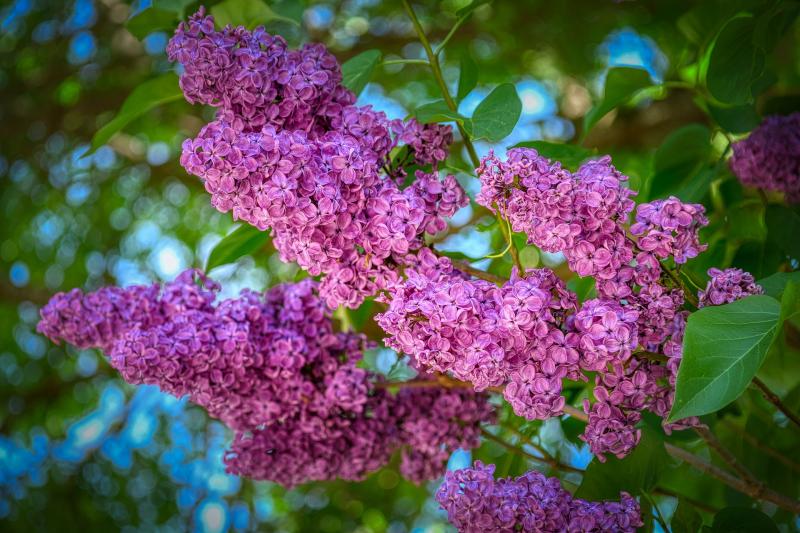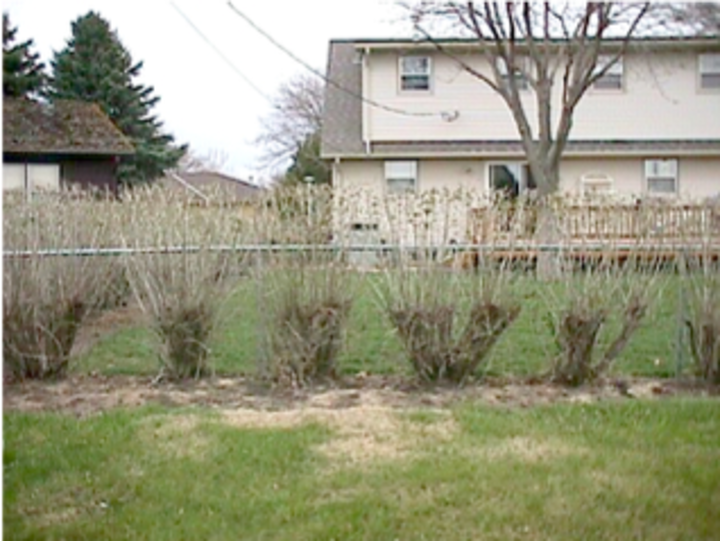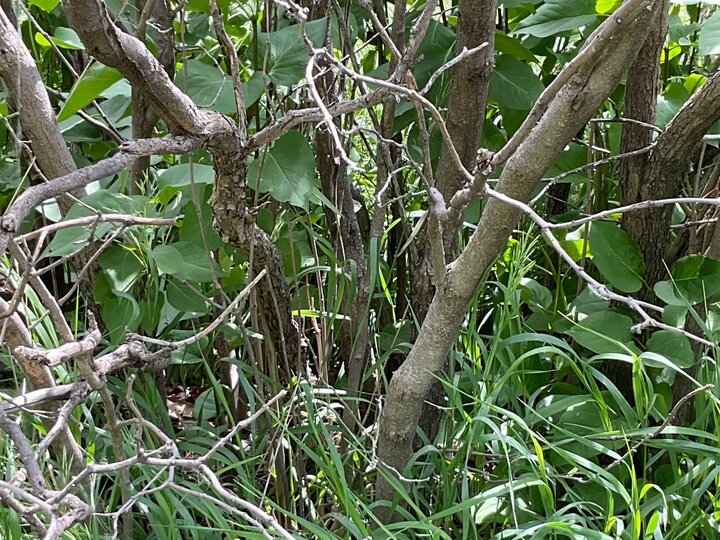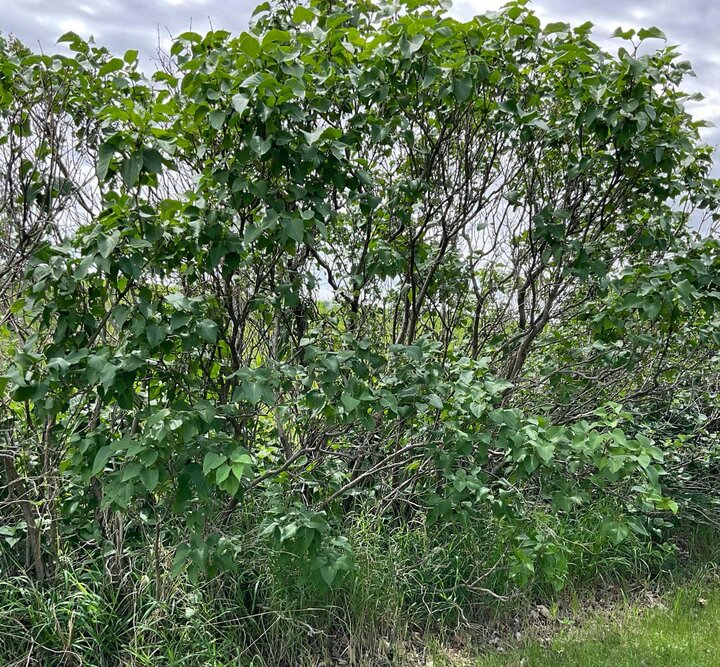Sarah Browning, Nebraska Extension Educator

Lilac flowers. Image from Pixabay.com.
The common lilac is a tough, reliable shrub that may reach a height of 15-20 feet. Plants begin forming flower buds in fall, which overwinter, then bloom in late spring, which makes pruning a challenge since most woody plants are pruned during the dormant season. How and when should plants be pruned to keep them healthy and vigorous, but not cut off all the flower buds?

Unfortunately, as lilacs mature, the lower portions of the become shaded by the upper canopy and lose their leaves. As a result, large, overgrown specimens are often leggy and unattractive. These thick, heavy stems are very prone to attack by lilac borers. Plus, a shrub 15-20 feet in height may have overgrown its location in the landscape. Fortunately, gardeners can address all these issue through pruning.
To keep lilacs as healthy and beautiful as possible, start young plants - those in their fourth or fifth year in the landscape - on a regular pruning program using the three-year pruning strategy outlined below. Old, neglected lilacs can be renewed using this same three-year method or renovated using the second strategy below.

The best way to prune lilacs is to initiate a three-year pruning cycle. Begin the procedure in the first year by removing one third of the largest, thickest stems as close to ground level as possible in late winter. For young plants, this may mean only removing 2 or 3 stems; in older neglected plants many more branched can be removed in the first year of pruning. At the same time, remove any dead or unhealthy branches.
The following year, again in late winter, prune out another third of the thickest stems. Repeat the process again in the third year and for every year of the plants’ life in the landscape.
The heaviest, thickest stems are also often the tallest parts of the shrub, so gradually removing them will bring the overall height of the shrub down. Each year, once the oldest thickest stems have been removed for that year, additional light pruning of the branch ends can be done to even out the plant’s shape and give it an attractive outline. But remember, each cut to a branch tip is removing flower buds.
By not removing a very large amount of stem growth - with all their stored carbohydrates - as is done in renovation pruning, the plant is left with ample foliage each year to photosynthesis normally, maintaining health and vigor. This moderate amount of pruning encourages an equally moderate amount of new young shoots to develop from the base of the shrub - not the excessive sucker growth which sometimes follows renovation pruning. Then end result is a plant with young, healthy stems, producing many beautiful flowers.
When properly pruned using the 3-year plan an old, an overgrown lilac can be transformed into a vigorous attractive shrub within just a few years.

A more drastic way of renewing an overgrown lilac is to cut the entire plant back to within 6-8 inches of the ground in late winter - March or early April. This severe pruning will induce a large number of shoots to develop from the crown and roots during the following growing season.
In late winter of the next year, select among last year's new shoots and retain several strong, healthy ones to form the shrub’s new framework. Remove all other shoots at ground level. To encourage the development of branching in these young stems more quickly, cut them back at staggered heights just above an outward facing bud.
Disadvantages of the renovation pruning method are, first, it removes all flower buds and delays flower development for about 3 years. Plus, the drastic pruning often causes a very large number of new shoots to develop at the base of the plant. Often many more shoots than are wanted! If a gardener is trying to minimize the spread of a wide lilac shrub, they may find renovation pruning makes the problems worse as all the new suckers emerge.
But it does allow for the pruning work to be done all at one time. Once rejuvenated, start the 3-year pruning program to keep your lilac beautiful and healthy.
“But can’t I just trim the plant back evenly to 3 or 4 feet in height, instead of taking it all the way down to 6-8 inches?” This is a common question and a common practice for many gardeners, but this practice of sheering is often the worst option. This method allows the heavy, thick stem bases to continue developing, which will eventually be attacked by borers. Once these thick older stems die from borer attack, it results in dead sections in the plant.
Plus, if pruning is done at the wrong time of year, the flower buds are removed and the most beautiful feature of the plant is lost.
The three-year pruning method can be used on many shrubs, including barberry, red and yellow twig dogwood, forsythia, mockorange and weigelia.
Images:
- Example of heavy woody stems and regrowth left following repeated sheering of a hedge. Image by Sarah Browning, Nebraska Extension.
- Heavy woody lilac stems should be removed using the three-year pruning plan. Image by Sarah Browning, Nebraska Extension.
- Neglected lilac in need of pruning. Image by Sarah Browning, Nebraska Extension.
Search Our Archive
Associated Video
Lilac Management
Nebraska Extension Plant Diagnostician Kyle Broderick and UNL Director of Landscape Operations Jeff Culbertson discuss disease, environmental and pruning issues of lilac.